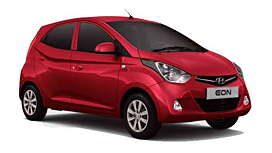Introduction

For long now Indian tastes have been evolving. We are no longer satisfied by Plain Janes but want Glamorous Glendas instead, all the more better if they are blondes. The signs were there to see way back when Daewoo wanted to launch the Racer but had to switch to the Cielo instead at the last moment. But it was long thought that we would choose a more stylish and contemporary car but would not pay extra for those assets. That was proved wrong by the Maruti-Suzuki Swift which not only got a premium for its contemporary and stylish looks but also went ahead to forge a new segment altogether – that of a premium hatchback, which has since been taken even further and higher by the likes of the Hyundai i20.
But, entry level cars aren’t supposed to follow this logic. They are supposed to be the tried and tested hand-me-downs from higher segments, ageing warriors with nip and tucks but no money for plastic surgery. Emission norms have necessitated better and more efficient engines but that’s where the buck stops. And we have the Maruti Alto at the top of the leaderboard without any significant changes in looks or character since it was first launched over a decade ago. Since then, the new Alto has come-in as the A-star, a full segment above its older sibling.
Looks & Interiors

It is here that Hyundai comes in with its masterstroke. A car that looks stylish and is contemporary, has features and interiors to match its modern day looks at entry level prices. And its prices do not start off where the Santro range ends, but start and end marginally below the starting and ending of the Santro range.
The looks are there for all to see. It does not look too drastic and edgy like the Chevrolet Beat but has enough character and defining lines to make it stand out. Following Hyundai’s new Fluidic styling cues, the car looks dynamic and sporty, and follows the trend set by first the Hyundai ‘i’s and then the Verna. From the looks and its excellent exterior fit and finish, one could easily be fooled into thinking that this was a premium product with its price starting above the Santro and not below it. The top of the line Eon comes with fog lamps, body coloured door handles and external mirrors, a micro roof antenna and full covers on 13in wheels.
The drive

Although the car may look very compact, it sports the same wheelbase as the i10 and the Santro and the same underpinnings as well. And although it is slightly shorter than the two other Hyundai small cars, it is as broad if not broader and is definitely the lowest of the trio.
The engine is also derived from that of the Santro – three-cylinders as opposed to the Santro’s four with the identical bore and stroke and a single overhead cam and three valves per cylinder. Consequently, max power output is down to 56bhp. The engine is mated to a five speed manual gearbox.
One gets to a very comfortable position behind the wheel with a little help from the tiltable steering column. The engine is rough at idling, to say the least. It is very evident that this is a basic three cylinder unit and vibrations can be felt throughout the car. Open doors start vibrating as well. I guess there is a price to pay for the car starting off below the Santro. However once on the move the engine feels more balanced. It is clear that this is not a sporty car but for city driving the lack of power or the availability of just 56bhp and 75Nm of peak torque is not much of a problem. Even on the higway the car gets up to decent cruising speeds and remarkably is quite stable as well. The MDPS is not as dead around the centre as many other electric steering units and offers decent feedback. The car is agile and with decent visibility, good to drive around in the city. The air-con unit though noisy seems good and with good circulation, cools down the car in no time. Of course we drove the car at the onset of winter months so the judgement of the air-con will have to wait. However it helps to switch to the air-con off on the highway while going in for overtaking manouvres.
Hyundai claims it is the most fuel efficient car in its segment and cites the ARAI figure of 21.1kmpl to argue its case. Real world fuel efficiency figures will be much lower though but the gear-shift indicator will definitely help the average man to maximize the fuel efficiency.
Verdict

Hyundai has attempted to do to the entry level segment what Maruti-Suzuki did with the Swift in the then premium hatchback segment. The only difference being that Hyundai is not asking for much of a premium for stylish contemporary looks and modern interiors. As ARAI fuel efficiency figures are comparable, the EON will be fuel efficient as well and thus tick all the boxes on a buyers list and some more. Finally first time buyers have a modern value for money car which does not look like a compromise and which is practical at the same time.
























